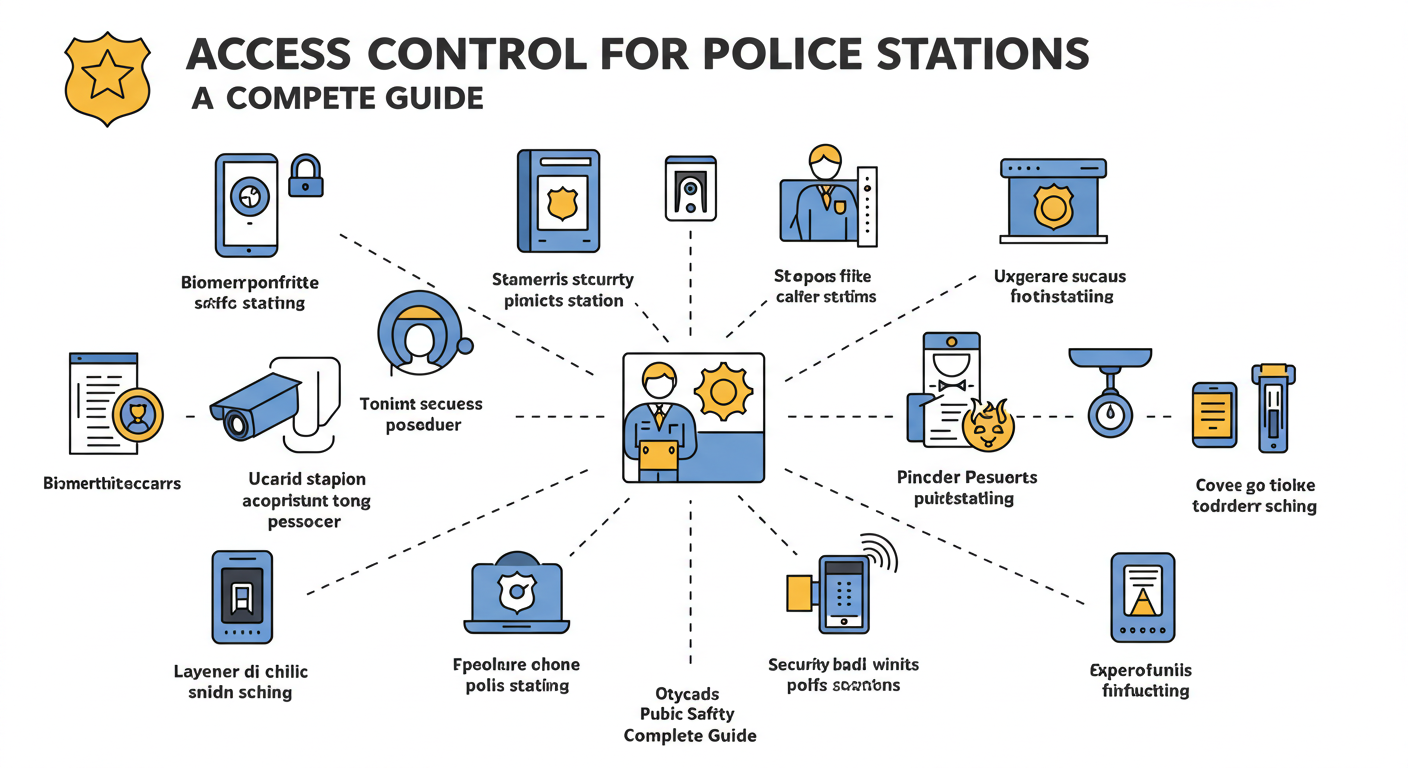Police stations are among the most secure facilities in any community. With sensitive records, evidence rooms, weapons storage, and holding areas, ensuring only authorized personnel can enter specific zones is critical. Traditional keys are no longer enough. That’s why access control for police stations has become a cornerstone of modern law enforcement security strategies.
Why Access Control Matters for Police Stations
Unlike commercial offices, police facilities demand higher security because they store confidential data, firearms, and detainees. A breach could compromise investigations or put officers and civilians at risk.
An advanced police station access control system allows administrators to:
– Restrict entry to sensitive areas
– Track and monitor staff movements
– Prevent unauthorized access to evidence rooms and weapon lockers
– Create clear audit trails for accountability
Types of Access Control Systems for Police Facilities
Choosing the right system depends on the specific needs of each station. Below are the most effective solutions for law enforcement environments.
Key Card and Fob Systems
Key cards and fobs provide quick, secure access while maintaining a digital record of every entry. In police stations, they’re especially useful for controlling access to staff-only entrances, garages, and restricted hallways. Cards can be deactivated instantly if lost, reducing risk compared to traditional metal keys.
Mobile Credentials
Mobile access control systems let officers use their smartphones as secure digital keys. This method improves convenience, especially for on-duty officers who may not want to carry extra cards or fobs. Mobile credentials can also be updated remotely by administrators.
Multi-Layered Authentication
Police stations benefit from two-factor authentication, where users must present both a card/fob and a PIN or biometric scan. This extra layer protects highly sensitive areas, such as evidence lockers or detention facilities.
Advantages of Access Control for Police Stations
Implementing an access control system in law enforcement facilities provides several key benefits:
– Enhanced Security: Protect weapons, records, and detainees from unauthorized access.
– Accountability: Digital logs record who accessed which area and when, supporting internal investigations.
– Scalability: Easily add or remove users as staff changes occur.
– Integration: Connect with video surveillance, alarms, or dispatch systems for complete security coverage.
– Operational Efficiency: Reduce reliance on physical keys, which are easily lost or duplicated.
Custom Access Control Applications in Police Stations
Different areas within a police station require different levels of access:
– Evidence Rooms: Biometric access ensures only assigned officers can handle sensitive materials.
– Armories: Two-factor authentication prevents unauthorized access to firearms.
– Holding Cells: Access logs help track officer activity for safety and compliance.
– Administrative Offices: Card-based systems manage entry for support staff and external visitors.
Conclusion
Protecting law enforcement facilities demands more than traditional locks and keys. Access control for police stations provides the advanced security, accountability, and efficiency necessary to safeguard critical assets and maintain community trust. By adopting biometric systems, key card solutions, or mobile credentials, police departments can strengthen their defenses and streamline operations.











